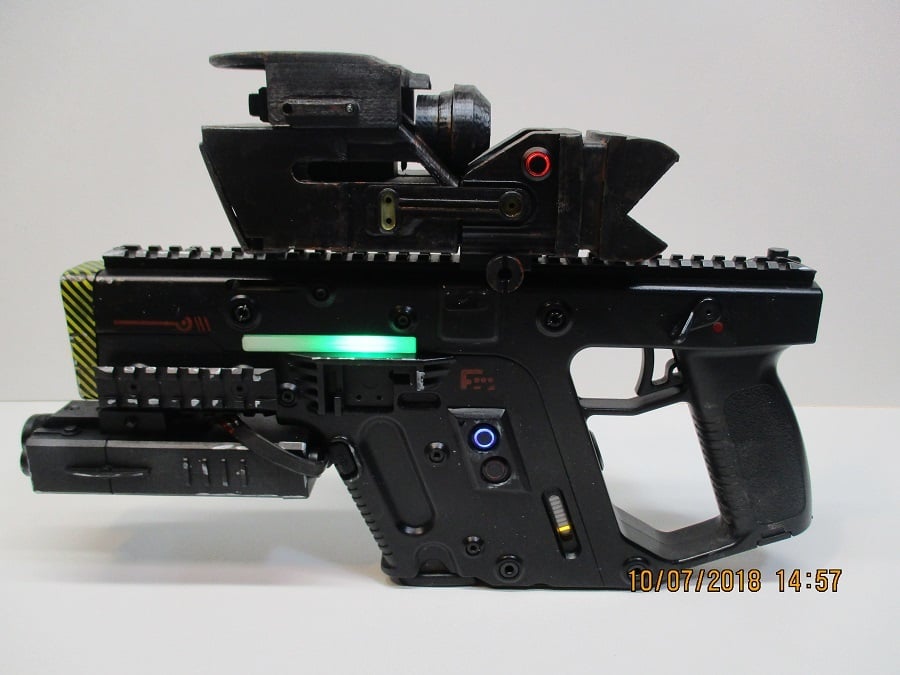
XRAD'S REAL LASER BLASTER WITH LIDAR SCANNER
thingiverse
It appears that you're describing a DIY project involving 3D printing and electronics, specifically a robotic arm or robotic laser blaster. The instructions provided are quite detailed, but I'll try to summarize the key points: 1. **Prototype Assembly:** The project involves assembling a 3D printed chassis, which requires some modifications and additions to fit various components, such as a servo motor, TFMini camera module, speaker, and power supply. 2. **Wiring and Power Supply:** The project uses a Pololu low-voltage switch to control the power supply, ensuring that all electronics are powered from a safe voltage source. Wiring is carefully managed to avoid overloading any single component or causing electrical shock. 3. **Electronics Components:** Several components are used in the project, including a Teensy 3.2 microcontroller, an FXMini, a servo motor for moving parts, and a TFMini camera module for sensing the environment. 4. **LIDAR Thing:** The project also includes a LIDAR sensor (TFMini) that helps in navigation and obstacle detection. The code for this part of the project is shared online and can be accessed by joining certain forums or websites. 5. **Real Laser Blaster:** This part of the project involves creating a laser blaster with a Plasma Core power source, powered by a Trinket board. It's more complex than the LIDAR Thing and requires some machining of aluminum parts for its internal function. 6. **3D Printing and Assembly:** The instructions provide details on how to assemble the 3D printed chassis, including gluing together various parts like the TFT mount, chassis, and side rails. 7. **Electrical Tape and Isolation:** To protect against electrical shock or short circuits, the project involves wrapping the electronic boards in electrical tape for insulation and isolation. 8. **Wiring Tips:** The instructions provide tips on how to manage wiring carefully, ensuring that all components are powered from a safe voltage source and avoiding overloading any single component. 9. **Display and Sounds:** The project includes sounds and display effects, which can be adjusted or customized as needed. 10. **YouTube Videos and Code Sharing:** Links are provided to YouTube videos showing the project in action and sharing code online for others to access and learn from. This is a comprehensive project that combines 3D printing with electronics and coding. It's impressive in its complexity and the level of detail provided in the instructions.
With this file you will be able to print XRAD'S REAL LASER BLASTER WITH LIDAR SCANNER with your 3D printer. Click on the button and save the file on your computer to work, edit or customize your design. You can also find more 3D designs for printers on XRAD'S REAL LASER BLASTER WITH LIDAR SCANNER.
